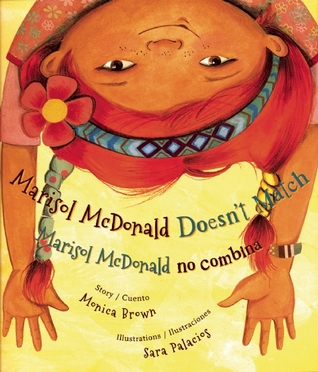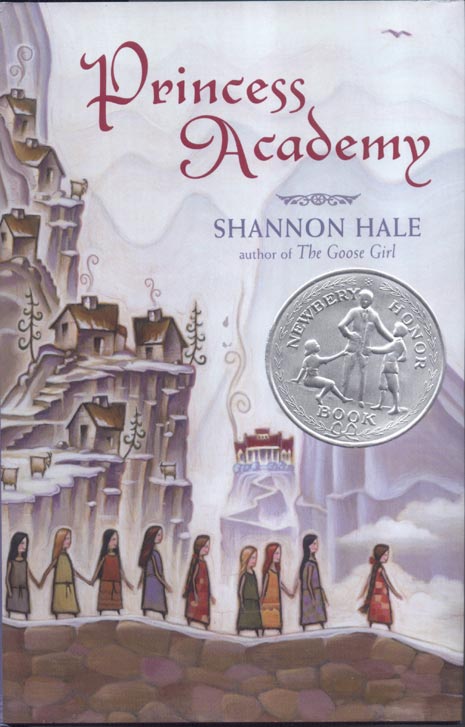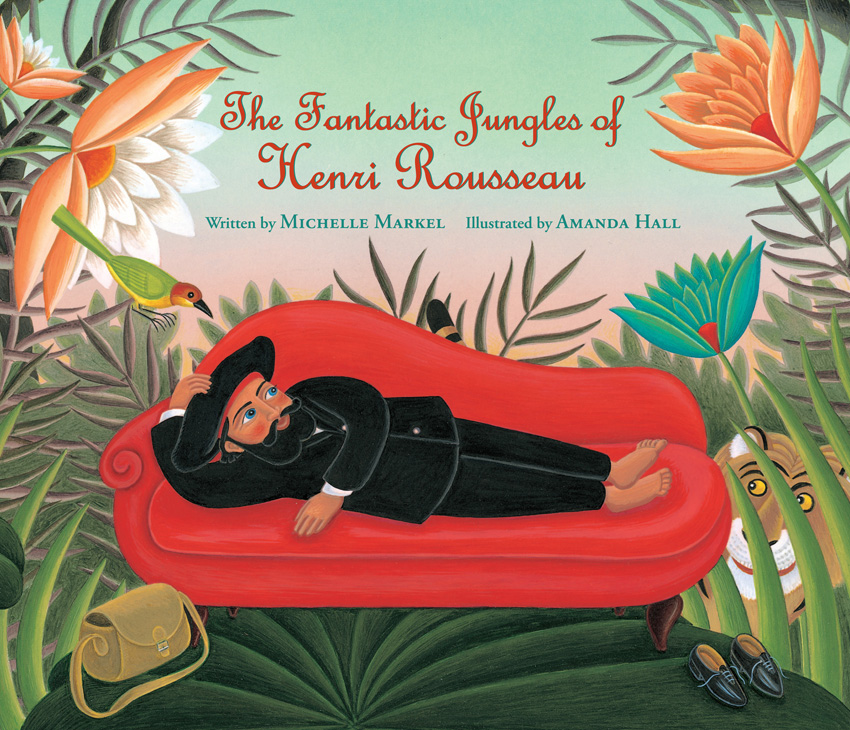 Henri Rousseau was a toll collector for the city of Paris when, at the age of 40, he decided to become an artist--a famous artist. Michelle Markel's picture book biography The Fantastic Jungles of Henri Rousseau (illustrated by Amanda Hall; Eerdmans, 2012) begins with that surprising decision. Her precise and poignant text balances Rousseau's love of nature and growing confidence in his own work (he was self-taught) with his lifelong desire for critical recognition.
Henri Rousseau was a toll collector for the city of Paris when, at the age of 40, he decided to become an artist--a famous artist. Michelle Markel's picture book biography The Fantastic Jungles of Henri Rousseau (illustrated by Amanda Hall; Eerdmans, 2012) begins with that surprising decision. Her precise and poignant text balances Rousseau's love of nature and growing confidence in his own work (he was self-taught) with his lifelong desire for critical recognition.
Poor Henri! No sooner does he paint something we might consider a masterpiece(The Sleeping Gypsy, The Hungry Lion Throws Itself on the Antelope, and The Dream are referenced in the text or in Hall's illustrations) than the experts say mean things about it: "They say it looks like he closed his eyes and painted with his feet."
But Rousseau keeps painting. Eventually, near the end of his life, younger, more well-known artists befriend him. One of them, Pablo Picasso, even throws a banquet in his honor (that's Picasso with Fernande Olivier on the right; a key at the back of the book identifies the other historical figures in the illustration below).
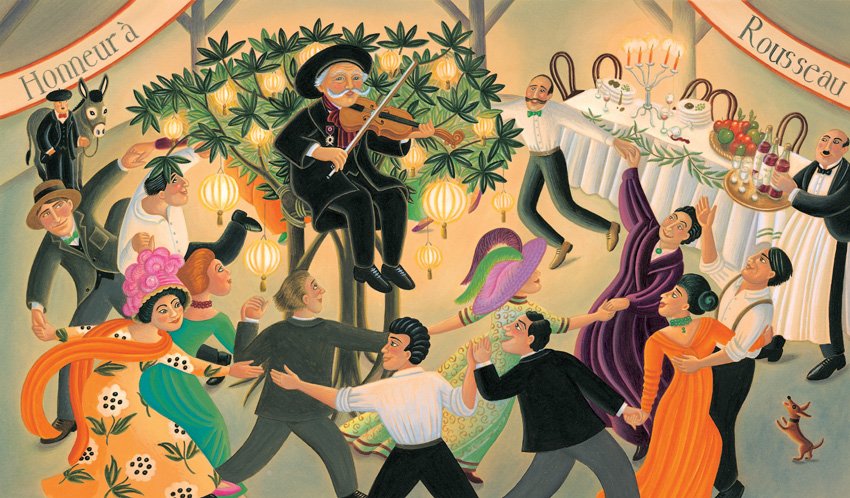
At last, and over one hundred years later, Rousseau's paintings hang in museums around the world. [There are three on view at the National Gallery; I'm excited to see them after having read the book.]
Amanda Hall's illustrations, rendered in watercolor and acrylics, really capture the feel of Rousseau's work, from the lush foliage and flowers to the faces of people and animals. In an illustrator's note (there's also an author's note, but sadly no sources), Hall writes that she "decided to break the rules of scale and perspective to reflect [Rousseau's] unusual way of seeing the world. For some of the illustrations, I drew directly on his actual paintings, altering them playfully to help tell the story." My favorite example is this image of a tiger literally crawling out of the canvas as Henri paints:
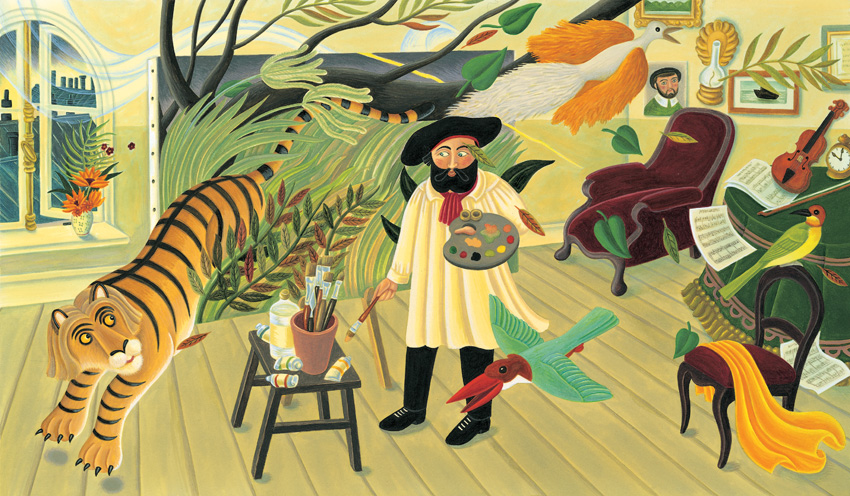
The understated text reads, "Sometimes Henri is so startled by what he paints that he has to open the window to let in some air."
Aside: Kids might be interested to know that the jungle in the computer-animated movie Madagascar was inspired by Rousseau's work. My own kids were also interested to know that I had a cheap print of Sleeping Gypsy in my college dorm room.
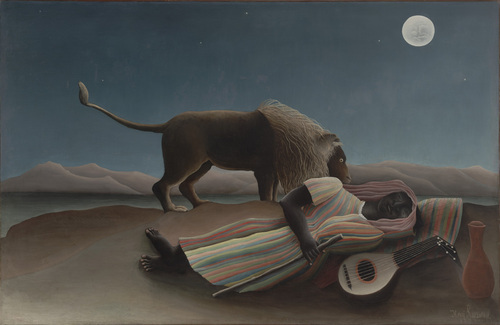
It's still my favorite Rousseau.
 The Cybils are the Children's and Young Adult Bloggers' Literary Awards, and this is the fourth year I'll be a first-round panelist in the Middle Grade Fantasy and Science Fiction category. I love being a panelist: our job is to read widely from among the nominated books and, after lots of discussion, come up with a shortlist (that's last year's) of five to seven titles that combine literary merit and kid appeal. Congratulations to this year's Cybils panelists and judges across all categories, but especially those in mg sff: I"m looking forward to a fantastic fall!
The Cybils are the Children's and Young Adult Bloggers' Literary Awards, and this is the fourth year I'll be a first-round panelist in the Middle Grade Fantasy and Science Fiction category. I love being a panelist: our job is to read widely from among the nominated books and, after lots of discussion, come up with a shortlist (that's last year's) of five to seven titles that combine literary merit and kid appeal. Congratulations to this year's Cybils panelists and judges across all categories, but especially those in mg sff: I"m looking forward to a fantastic fall!